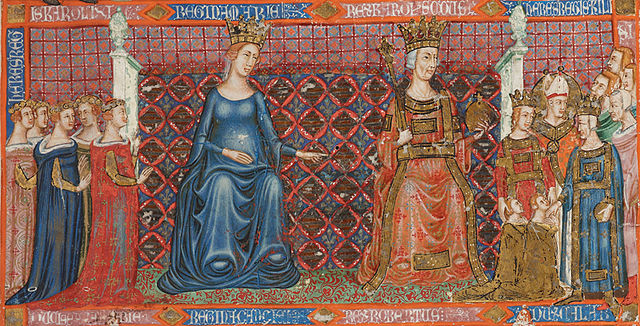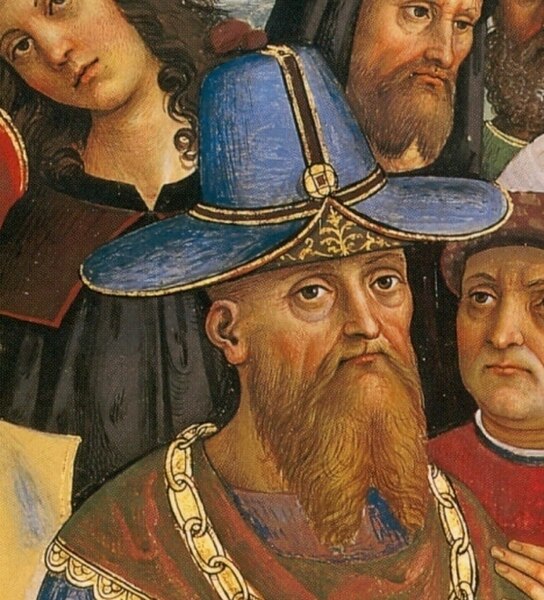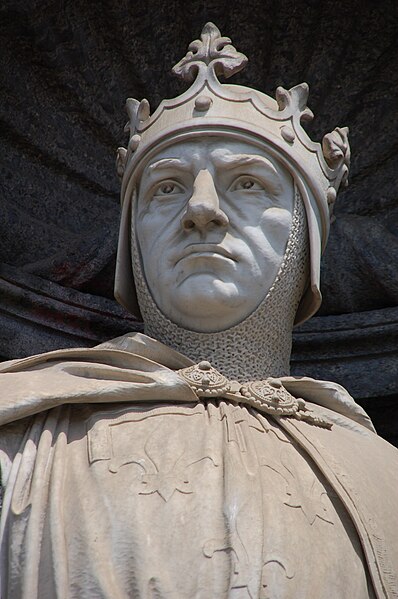Charles II, also known as Charles the Lame, was King of Naples, Count of Provence and Forcalquier (1285–1309), Prince of Achaea (1285–1289), and Count of Anjou and Maine (1285–1290); he also styled himself King of Albania and claimed the Kingdom of Jerusalem from 1285. He was the son of Charles I of Anjou—one of the most powerful European monarchs in the second half of the 13th century—and Beatrice of Provence. His father granted Charles the Principality of Salerno in the Kingdom of Sicily in 1272 and made him regent in Provence and Forcalquier in 1279.
Charles, his wife Mary and their children in the Bible of Naples, 1340
The Prince of Achaea was the ruler of the Principality of Achaea, one of the crusader states founded in Greece in the aftermath of the Fourth Crusade (1202–1204). The principality witnessed various overlords during its more than two centuries of existence, initially, Achaea was a vassal state of the Kingdom of Thessalonica under Boniface I of house Montferrat, then of the Latin Empire of Constantinople under the houses of Flanders-Courtenay, which had supplanted the Byzantine Empire, and later of the Angevin Kingdom of Naples. During the Angevin period, the princes were often absent, represented in the Principality by their baillis, who governed in their name. After 1404 the principality became sovereign as the Genoese Centurione II Zaccaria bought from the Neapolitan crown the princely rights.
Portrait of Thomas Palaiologos, who inherited Centurione Zaccaria's lands in 1432
Image: Seal of Geoffrey I of Villehardouin (Schlumberger, 1897)
Image: Palazzo Reale di Napoli Carlo I d'Angiò
Image: Isabella of Villehardouin





